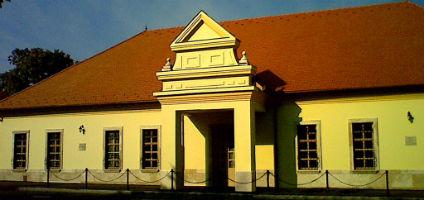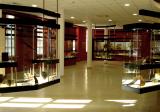2024. April 19. Friday
"Matrica" Museum - Százhalombatta
 |
Address: 2440, Százhalombatta Gesztenyés út 1-3.
Phone number: (23) 354-591, (23) 540-070
E-mail: info@matricamuzeum.hu
Opening hours: Tue-Sun 10-17
Park 01.04-31.10. |
The Matrica Museum of Százhalombatta and its permanent exhibition was opened in 1987.
Because of the quality of the exhibition, the institute was declared a town museum in 1988. In 1989 it also became a region museum.
Matrica was a Roman settlement. Excavations made here brought up wonderful relics, the most beautiful of which can be seen on the exhibition. The restored Roman bath in Dunafüred can also be visited.
The mud castle of the bronze age and the relics of the nominator hills are also beautiful to look et. The hill number 115 and the wooden tomb underneath are shown to the visitors in their reconstructed state. Near the hill there is the archeologic park that is visited by tens of thousands every year.
Our workers collected samples of Serbian and Hungarian traditions and crafts. These were recorded on audio and viseo tapes. Photographs were also taken.
The Matrica Museum of Százhalombatta is well known even abroad. More and more people are aware of th efact that Százhalombatta is a 4000 years old settlement of rich history and cultural traditions.
The museum was awarded the Museum of the Year prize in 1997. The permanent exhibition opened in 1987 was altered and in 2000 for the Millennium.
The museum has an up-to-date security and relic protecting system. We can enter the various ages through stylish gates. The written guidelines also refer to the situations of other parts of the world.
Fewer cabinets and much interiour make the exhibition more life-loke and enjoyable. Guides and written materials are available both in Hungarian and English.
We arrange about 5 to 7 temporal exhibitions annually.
Because of the quality of the exhibition, the institute was declared a town museum in 1988. In 1989 it also became a region museum.
Matrica was a Roman settlement. Excavations made here brought up wonderful relics, the most beautiful of which can be seen on the exhibition. The restored Roman bath in Dunafüred can also be visited.
The mud castle of the bronze age and the relics of the nominator hills are also beautiful to look et. The hill number 115 and the wooden tomb underneath are shown to the visitors in their reconstructed state. Near the hill there is the archeologic park that is visited by tens of thousands every year.
Our workers collected samples of Serbian and Hungarian traditions and crafts. These were recorded on audio and viseo tapes. Photographs were also taken.
The Matrica Museum of Százhalombatta is well known even abroad. More and more people are aware of th efact that Százhalombatta is a 4000 years old settlement of rich history and cultural traditions.
The museum was awarded the Museum of the Year prize in 1997. The permanent exhibition opened in 1987 was altered and in 2000 for the Millennium.
The museum has an up-to-date security and relic protecting system. We can enter the various ages through stylish gates. The written guidelines also refer to the situations of other parts of the world.
Fewer cabinets and much interiour make the exhibition more life-loke and enjoyable. Guides and written materials are available both in Hungarian and English.
We arrange about 5 to 7 temporal exhibitions annually.
